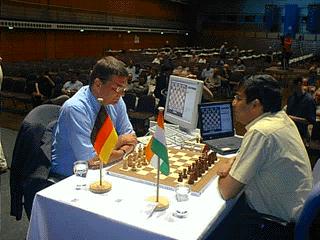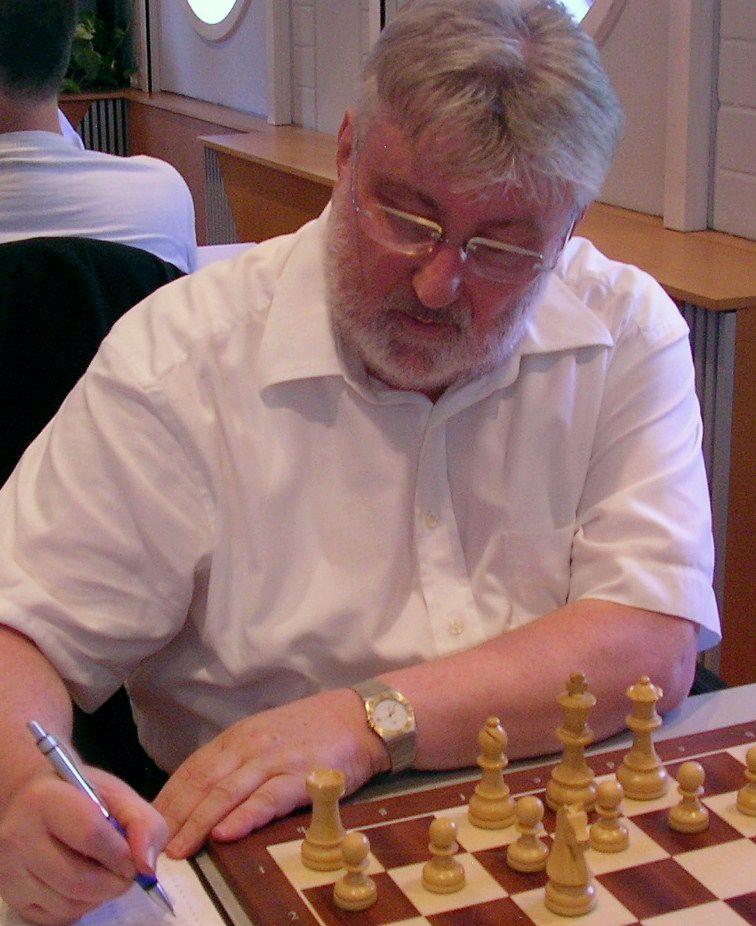|
Jens Beutel
Jens Beutel (12 July 1946– 8 May 2019) was a German judge and politician. A member of the Social Democratic Party (SPD), he served as Oberbürgermeister (mayor) of Mainz, the state capital of Rheinland-Pfalz, from 1997 to 2011. During his tenure, the city improved especially by building projects, including the new synagogue, and new parks. Career Born in Lünen, Westphalia, Beutel studied law at the University of Mainz from 1968 to 1976 and then served as a judge in Frankenthal, Koblenz and Mainz. He presided over the Mainzer Landgericht in the Worms abuse cases, which received nationwide attention. He began his political career as ' in Mombach, a borough of Mainz, in 1974. Beutel was elected to the city council of Mainz (''Stadtrat'') in 1989, where he focused on topics such as building, traffic, finance, commerce and sports. He became chairman of the Mainz SPD in 1995. Beutel was elected as Oberbürgermeister in 1996, the first who was elected to the position directly ... [...More Info...] [...Related Items...] OR: [Wikipedia] [Google] [Baidu] |
List Of Mayors Of Mainz
left, 40px Franz Konrad Macké (1756–1844, Maire and Mayor of Mainz (Lithographie by Gauff) This is a list of mayors of Mainz, including the Lord Mayors (''Oberbürgermeister von Mainz'') since 1796. *1796–1800: Fredrick Pongrass *1800–1814: Franz Macké *1814–1831: Franz Freiherr Gedult von Jungenfeld *1831–1834: Franz Macké *1834–1836: Stephan Metz *1837–1838: Johann Baptist Heinrich *1839–1841: Stephan Metz *1842–1860: Nikolaus Nack *1861–1864: Karl Schmitz *1865–1871: Franz Schott *1871–1872: Karl Racké *1872–1877: Carl Wallau *1877–1885: Alexis Dumont *1885–1894: Georg Oechsner *1894–1905: Heinrich Gassner *1905–1919: Karl Göttelmann *1919–1931: Karl Külb *1931–1933: Wilhelm Ehrhard *1934–1942: Robert Barth *1942–1945: Heinrich Ritter *1945: Rudolph Walther *1945–1949: Emil Kraus *1949–1965: Franz Stein *1965–1987: Jakob "Jockel" Fuchs *1987–1997: Herman-Hartmut Weyel *1997–2011: Jens Beutel ... [...More Info...] [...Related Items...] OR: [Wikipedia] [Google] [Baidu] |
Sanctuary Of Isis And Magna Mater, Mainz
The Sanctuary of Isis and the Magna Mater was a sanctuary in Mainz, dedicated to Isis and Magna Mater. The temple was founded during the 1st century and remained active until at least the 3rd century. Its remains were discovered in late 1999, during construction of a shopping arcade (later named "Römerpassage") in the city centre. Substantial excavations have been made at the site since. The remains of the building, selected finds, and a multimedia framework presentation can be viewed in a small museum in the basement of the Römerpassage. Consecration inscriptions suggest that the Flavian imperial house may have been involved in the foundation of the sanctuary. Historical background Roman Mainz was founded as the legionary ''castrum'' of Mogontiacum on the Mainz Kästrich, a hill above the Rhine valley, in 13/12 B.C.. The rapidly developing Canaba, the civil vicus towards the Rhine and the public buildings of the later provincial capital, such as thermal baths, theatres, adm ... [...More Info...] [...Related Items...] OR: [Wikipedia] [Google] [Baidu] |
Die Welt
''Die Welt'' ("The World") is a German national daily newspaper, published as a broadsheet by Axel Springer SE. ''Die Welt'' is the flagship newspaper of the Axel Springer publishing group. Its leading competitors are the ''Frankfurter Allgemeine Zeitung'', the '' Süddeutsche Zeitung'' and the '' Frankfurter Rundschau''. The modern paper takes a self-described "liberal cosmopolitan" position in editing, but it is generally considered to be conservative."The World from Berlin" '' Der Spiegel'', 28 December 2009."Divided on unification" '' [...More Info...] [...Related Items...] OR: [Wikipedia] [Google] [Baidu] |
List Of Social Democratic Party Of Germany Politicians
A list of politicians and notable members of the Social Democratic Party of Germany: __NOTOC__ A B C D E F G H I J K L M N O P Q R S T U V W X Y Z A * Sanae Abdi * Karl Aberle * Wolfgang Abendroth * Kurt Adams * Dieter Aderhold * Lore Agnes * Johannes Agnoli * Adis Ahmetovic * Lale Akgün * Heinrich Albertz * Luise Albertz * Torsten Albig * Britta Altenkamp * Jakob Altmaier * Gregor Amann * Gerd Andres * Niels Annen * Hans Apel * Bruno Apitz * Jan Appel * Max Archimowitz * Martha Arendsee * Walter Arendt * Johannes Arlt * Ingrid Arndt-Brauer * Rainer Arnold * Leo Arons * Karl Artelt * Rosa Aschenbrenner * Jörg Asmussen * Siegfried Aufhäuser * Elise Augustat * Ferdinand Auth B * Till Backhaus * Ernst Bader * Egon Bahr * Ernst Bahr * Karl Baier * Walter Ballhause * Hans Baluschek * Arnulf Baring * Doris Barnett * Hans-Peter Bartels * Karl Barth * Klaus Barthel * Kurt Barthel * Max Barthel * Sören Bartol * Bernhard Bästle ... [...More Info...] [...Related Items...] OR: [Wikipedia] [Google] [Baidu] |
Viswanathan Anand
Viswanathan "Vishy" Anand (born 11 December 1969) is an Indian chess grandmaster and a former five-time World Chess Champion. He became the first grandmaster from India in 1988, and is one of the few players to have surpassed an Elo rating of 2800, a feat he first achieved in 2006. In 2022, he was elected the deputy president of FIDE. Anand defeated Alexei Shirov in a six-game match to win the 2000 FIDE World Chess Championship, a title he held until 2002. He became the undisputed world champion in 2007, and defended his title against Vladimir Kramnik in 2008, Veselin Topalov in 2010, and Boris Gelfand in 2012. In 2013, he lost the title to challenger Magnus Carlsen, and he lost a rematch to Carlsen in 2014 after winning the 2014 Candidates Tournament. In April 2006, Anand became the fourth player in history to pass the 2800 Elo mark on the FIDE rating list, after Kramnik, Topalov, and Garry Kasparov. He occupied the number one position for 21 months, the sixth-longe ... [...More Info...] [...Related Items...] OR: [Wikipedia] [Google] [Baidu] |
Chess Classic
The Chess Classics were chess tournaments initiated by Hans-Walter Schmitt, they were organized in the years 1994 to 2010. Among other things, the world champions in rapid chess and - also under rapid chess time control - the world champion in Chess960 and the computer Chess960 world champion were determined. Overview The Chess Classic took place a total of seventeen times, seven times in Frankfurt am Main (1994 to 2000) and ten times in Mainz, . In Mainz the Chess Classic (abbreviated to CCM) was played in the Rheingoldhalle. Hans-Walter Schmitt managed to find sponsorship from Jens Beutel Jens Beutel (12 July 1946– 8 May 2019) was a German judge and politician. A member of the Social Democratic Party (SPD), he served as Oberbürgermeister (mayor) of Mainz, the state capital of Rheinland-Pfalz, from 1997 to 2011. During his tenur ..., Lord Mayor of Mainz, and he became patron of the event. There were different events such as the Chess Classic Championship, Quick Chess Open, ... [...More Info...] [...Related Items...] OR: [Wikipedia] [Google] [Baidu] |
Council Of European Municipalities And Regions
The Council of European Municipalities and Regions (CEMR) is the largest organisation of local and regional governments in Europe. Its members are 60 national associations of towns, municipalities and regions from 41 countries that are part of the Council of Europe. Together these associations represent about 130,000 local and regional authorities. At the head of its political structure is its president, currently the president of the region Emilia-Romagna, Stefano Bonaccini. It has a staff of about 30, headed by its secretary-general, Fabrizio Rossi. CEMR’s annual budget is about €2.5 million. Membership fees from its national associations make up the bulk of its funding. About 15% are paid by the European Commission through an annual grant. The organisation has also assumed the function of the European section of the new worldwide organisation United Cities and Local Governments. History CEMR was founded in Geneva on 28 January 1951 by a group of European mayors as ... [...More Info...] [...Related Items...] OR: [Wikipedia] [Google] [Baidu] |
Roman Theatre (Mainz)
The Roman Theatre in Mainz, Rhineland Palatinate (ancient ''Mogontiacum'') was excavated in the late 1990s. It is located immediately next to the Mainz Römisches Theater station and was once the largest Roman theatre north of the Alps, with a diameter of 116 metres, a stage-width of 42 metres, and a capacity of roughly ten thousand people. History Mogontiacum owed its significance to its location at the meeting point of the Main and the Rhine. The city provided a convenient base for the defense of the nearby border of the Roman empire, the ''limes'', and for the organisation of military campaigns against the Germani. As a result, a double legionary camp was built on the site in 13/12 BC, which remained in place until some time after AD 350. Over time a civilian settlement (Latin ''vicus'') also developed on the site, which became the provincial capital of the newly created province of Germania Superior around AD 80. In this city, a Roman theatre was built, which was probabl ... [...More Info...] [...Related Items...] OR: [Wikipedia] [Google] [Baidu] |
Mainz Römisches Theater Station
Mainz Römisches Theater station is a station in the city of Mainz, the capital of the German state of Rhineland-Palatinate on the Main Railway from Mainz to Frankfurt am Main. It is the most important station in the city after Mainz Hauptbahnhof. It is classified by Deutsche Bahn as a category 3 station. The station is served by S-Bahn and regional trains. History ''Mainz Römisches'' (Roman) ''Theater'' is the third name of this station. Until the timetable change in December 2006, it was called ''Mainz Süd''. It was opened as ''Mainz-Neuthor'' station on the Rhine-Main Railway from Mainz to Darmstadt and Aschaffenburg. The railway between Mainz and Darmstadt was opened on 1 August 1858 and used a train ferry to cross the Rhine until 1862 when the South Bridge was put into service. The Mainz-Ludwigshafen line opened later. In 1884 a bypass of central Mainz was opened along with Mainz Hauptbahnhof with its southern end near the original Mainz-Neuthor station. Entrance build ... [...More Info...] [...Related Items...] OR: [Wikipedia] [Google] [Baidu] |
Mainz Hauptbahnhof
Mainz Hauptbahnhof ("Mainz main station", formerly known as ''Centralbahnhof Mainz''von Meyer, Arthur (1891). ''Geschichte und Geographie der deutschen Eisenbahnen von ihrer Entstehung bis auf die Gegenwart'', W. Baensch, p. 1131) is a railway station for the city of Mainz in the German state of Rhineland-Palatinate. It is used by about 60,000 travelers and visitors each day and is therefore by far the busiest station in Rhineland-Palatinate. The station was a trial area for a CCTV scheme using automated face recognition. History The current station was built as a central station from 1882 to 1884 according to the plans of Philipp Johann Berdellé (1838–1903) as part of the expansion of the city after the Franco-Prussian War. Origins Under the ''Rheinschifffahrtsakte'' (Rhine navigation treaty) of 1831, Mainz lost its right to impose a ''stapelrecht'' (pile right, a medieval right apparently first granted by Charlemagne to some cities, including Mainz, to require river t ... [...More Info...] [...Related Items...] OR: [Wikipedia] [Google] [Baidu] |
Staatstheater Mainz
The Staatstheater Mainz (Mainz State Theatre) is a theatre in Mainz, Germany, which is owned and operated by the state of Rhineland-Palatinate. Situated on the Gutenbergplatz, the complex comprises two theatres which are connected by an underground passage and also by skywalk. Performances of opera, drama and ballet are presented. Its name was Stadttheater Mainz (municipal theatre) until 1989. The main building was constructed between 1829 and 1833 by Georg Moller in Neoclassical style. The construction had been requested by the bourgeoisie of the city of Mainz for decades and cost 280,000 guilders (the city's budget amounted to 300,000 guilders at that time). The theatre's great hall (Großes Haus) was destroyed by bombing during World War II. Friedrich Meyer-Oertel became director of the theatre in 1968. The small hall (Kleines Haus) was built in 1997. Remedial work from 1976 to 1977 aimed at restoring Moller's rotunda were undertaken by Dieter Oesterlen. Between 1998 and ... [...More Info...] [...Related Items...] OR: [Wikipedia] [Google] [Baidu] |







